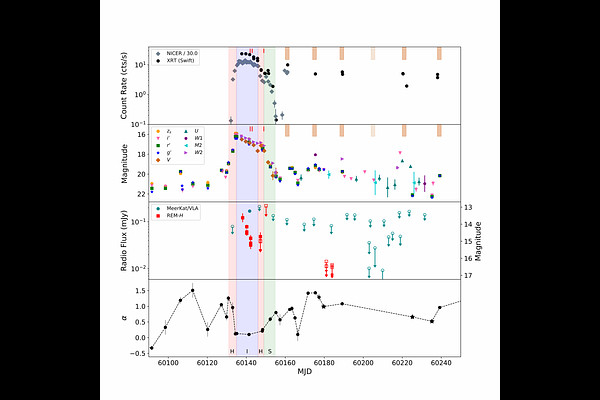A Multi-wavelength Characterization of the 2023 Outburst of MAXI J1807+132: Manifestations of Disk Instability and Jet Emission

A Multi-wavelength Characterization of the 2023 Outburst of MAXI J1807+132: Manifestations of Disk Instability and Jet Emission
Sandeep K. Rout, M. Cristina Baglio, Andrew Hughes, David M. Russell, D. M. Bramich, Payaswini Saikia, Kevin Alabarta, Montserrat Armas Padilla, Sergio Campana, Stefano Covino, Paolo D'Avanzo, Rob Fender, Paolo Goldoni, Jeroen Homan, Fraser Lewis, Nicola Masetti, Sara Motta, Teo Munoz-Darias, Alessandro Papitto, Thomas D. Russell, Gregory Sivakoff, Jakob van den Eijnden
AbstractSeveral phenomenological aspects of low-luminosity neutron star transients, such as atolls, remain poorly understood. One such source, MAXI J1807+132, entered its latest outburst in July 2023. To thoroughly characterize this outburst, we conducted an extensive observational campaign spanning radio to X-ray wavelengths. Here, we present the results of this campaign, which covered the period from before the outburst to the return to quiescence. We detected a delay between the X-ray and optical rise times, which is consistent with the predictions of the disk instability model with a truncated disk. The color evolution and optical/X-ray correlations, along with infrared and radio detections, support the presence of jet synchrotron emission during the gradual decay phase following the peak. We also report for the first time in an X-ray binary a near-orthogonal rotation of the optical polarization just before a small flare, after which the jet is thought to be quenched. The main outburst is followed by several high-amplitude, rapid reflares in the optical, ultraviolet, and X-ray bands, the origin of which remains difficult to constrain.